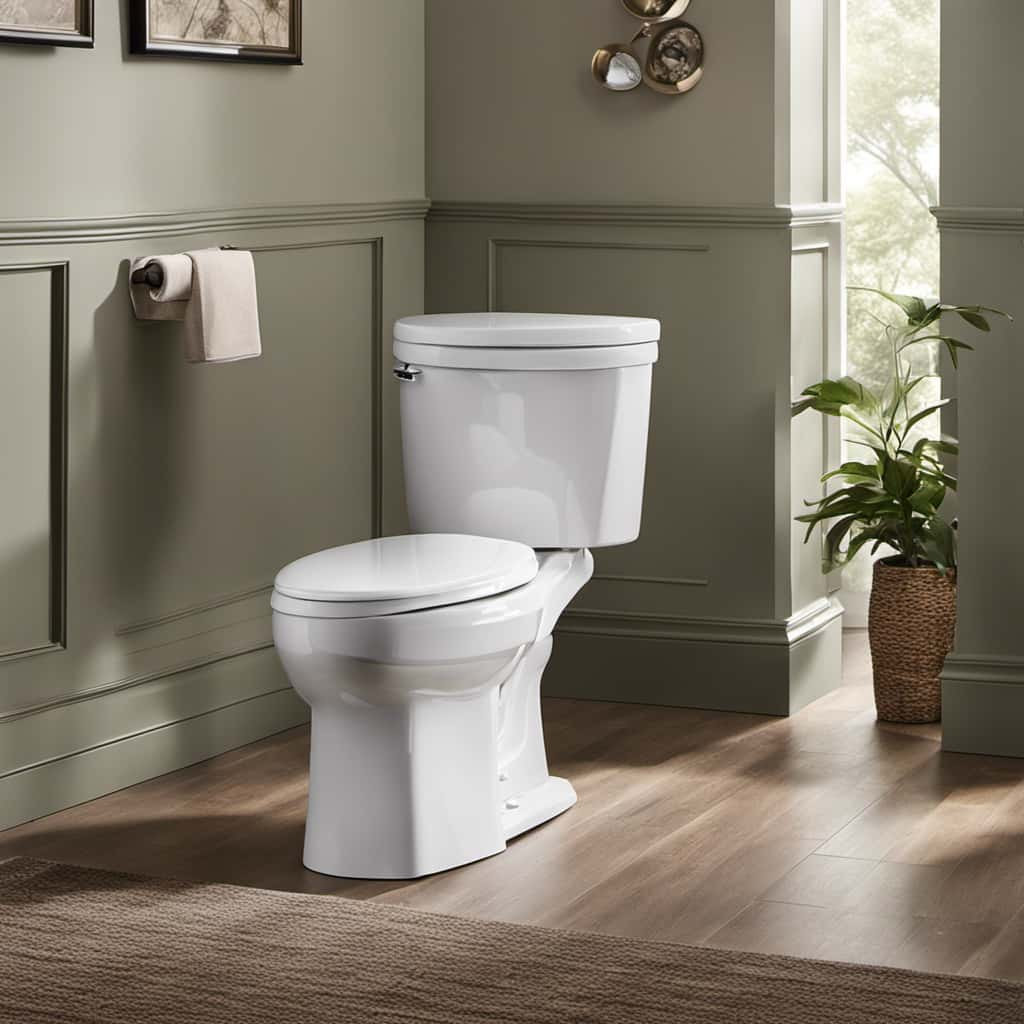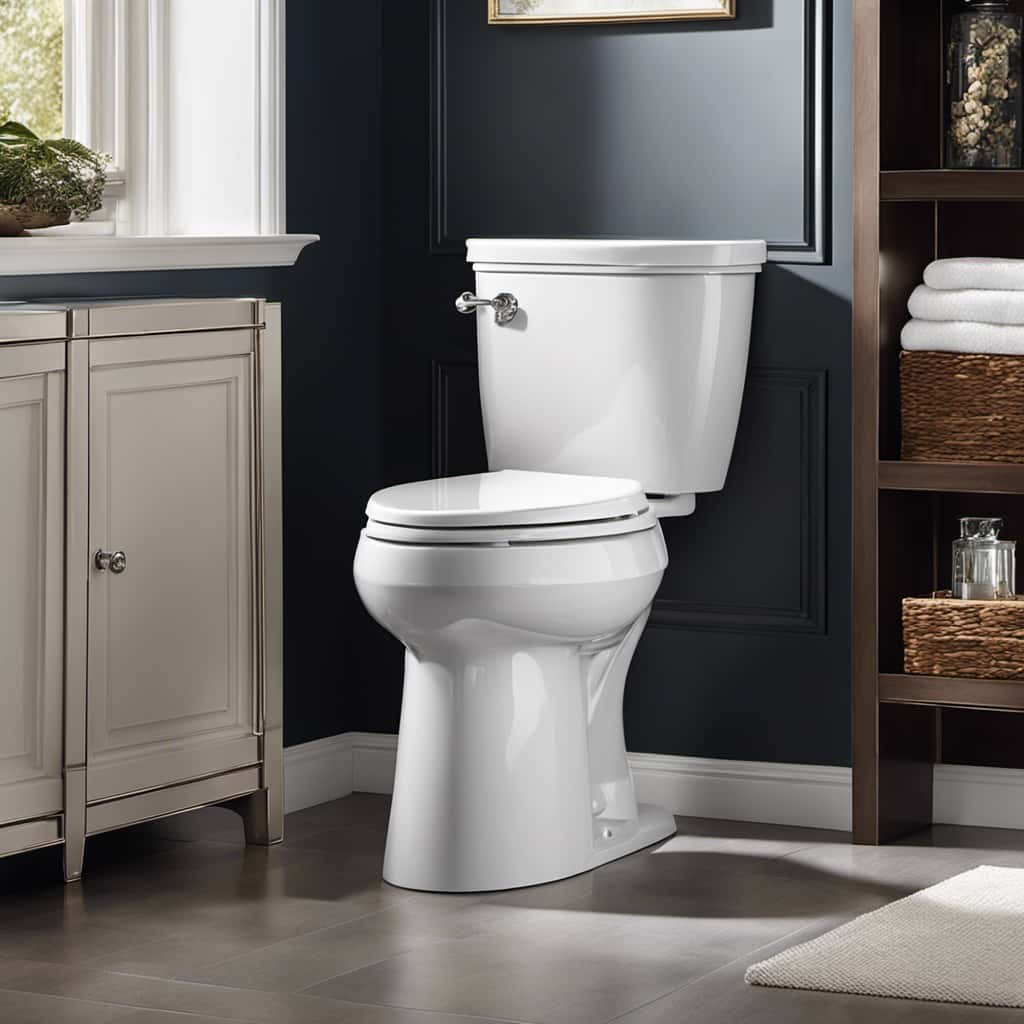Have you ever pondered whether a constantly running toilet will come to an end? Worry not, as we are here to clarify this baffling query.
In this article, we will dive into the inner workings of a toilet and explore the common causes behind its incessant running.
From understanding the mechanics to DIY solutions and preventative measures, we aim to equip you with the knowledge to put an end to this wasteful dilemma.
Let’s embark on this journey to toilet mastery together!
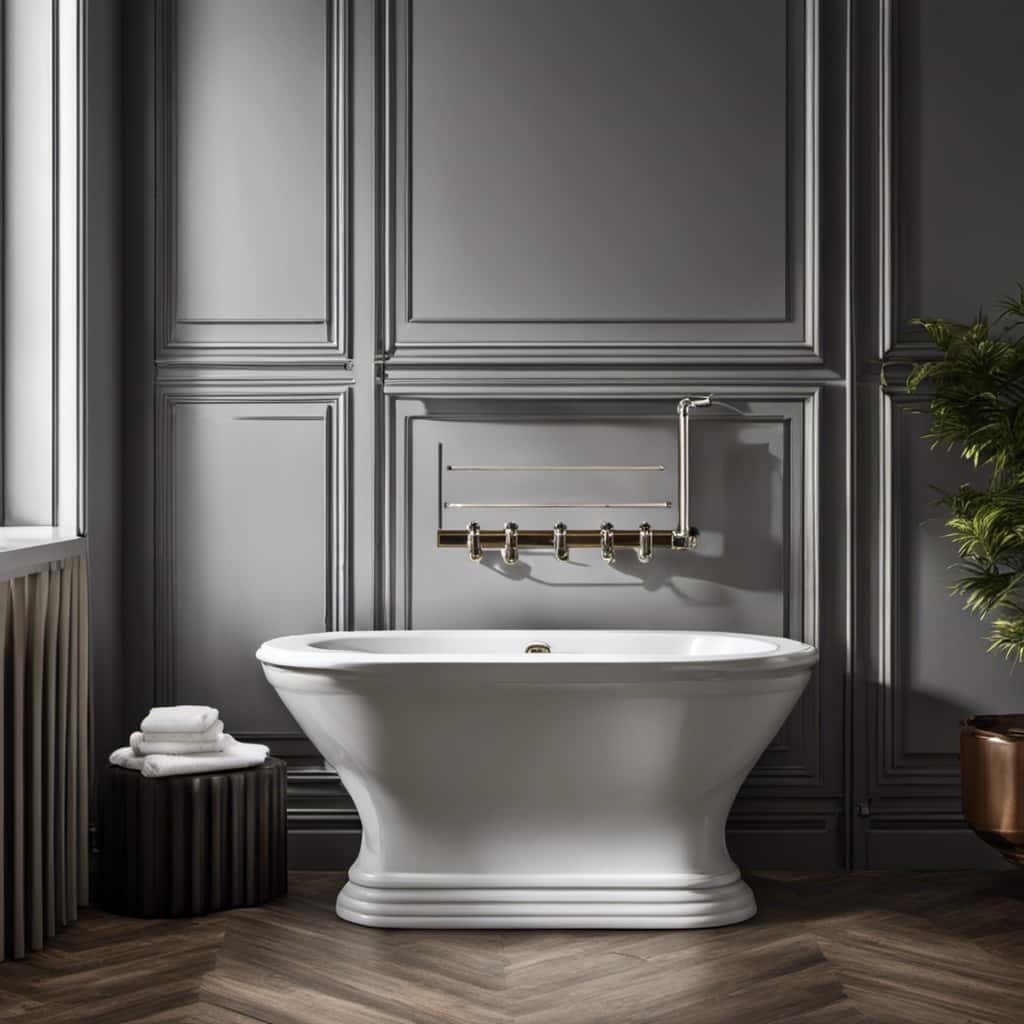
Key Takeaways
- A running toilet will not stop on its own and will continue to waste water and increase water bills.
- Ignoring a running toilet can lead to potential water damage.
- Prompt action is necessary to fix the issue of a running toilet.
- By following DIY solutions or calling a professional plumber, a running toilet can be resolved.
Common Causes of a Running Toilet
One of the common causes of a running toilet is a faulty flapper valve. The flapper valve is responsible for controlling the flow of water from the tank into the bowl.
When the flapper valve is worn out or damaged, it may not seal properly, causing water to continuously leak into the bowl. This not only leads to a noisy and annoying running toilet, but it also wastes a significant amount of water.
Toilet repair experts recommend checking the flapper valve regularly and replacing it if necessary to prevent water waste and ensure proper functioning of the toilet.
Understanding the Mechanics of a Toilet
Let’s now take a closer look at the mechanics of a toilet to understand why it may start running and how to fix it.
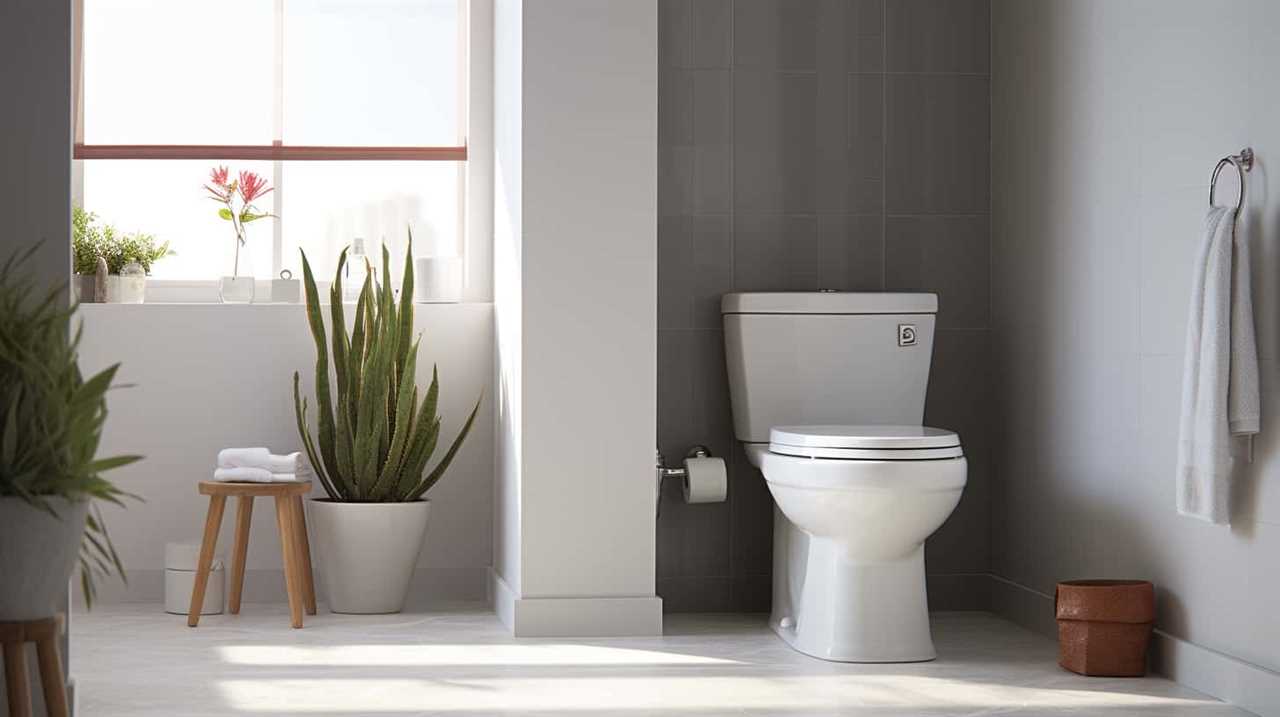
The first point to consider is the toilet tank filling process, where water flows in from the supply line and fills the tank to a specific level.
Next, we’ll discuss the function of the flapper valve, which controls the flow of water from the tank to the bowl.
Lastly, we’ll explore the importance of water level adjustment in maintaining proper flushing and preventing a running toilet.
Toilet Tank Filling
Toilet tank filling is a fundamental process that involves the precise coordination of various components to ensure the efficient and effective operation of a toilet. Understanding the mechanics of toilet tank filling is essential for proper toilet tank maintenance and troubleshooting. Let’s take a closer look at the components involved in this process:

| Component | Description |
|---|---|
| Fill valve | Responsible for controlling the water flow into the tank. It opens when the tank needs to be refilled and closes when the water level reaches the desired height. |
| Float | Attached to the fill valve, the float rises with the water level and signals the valve to shut off once it reaches the appropriate level. |
| Flapper | Covers the flush valve seat and is lifted when the toilet is flushed, allowing water to flow from the tank into the bowl. |
| Flush valve | Opens when the flapper is lifted, allowing water to rapidly enter the bowl for flushing. |
| Overflow tube | Prevents the tank from overflowing by directing excess water into the bowl. |
Flapper Valve Function
As we delve into the mechanics of a toilet, it’s important to understand the function of the flapper valve, which plays a crucial role in regulating the flow of water from the tank to the bowl.
The flapper valve is located at the bottom of the tank and is connected to the flush lever by a chain. When the flush lever is pressed, it lifts the flapper valve, allowing water to rush into the bowl, creating a flush.
Once the tank is empty, the flapper valve closes, preventing any further water from entering the bowl. Over time, the flapper valve may become worn or misaligned, causing leaks and running toilets.
In such cases, flapper valve replacement or adjustment may be necessary to restore proper functioning. Understanding the mechanics of the flapper valve is essential for troubleshooting and maintaining a well-functioning toilet.
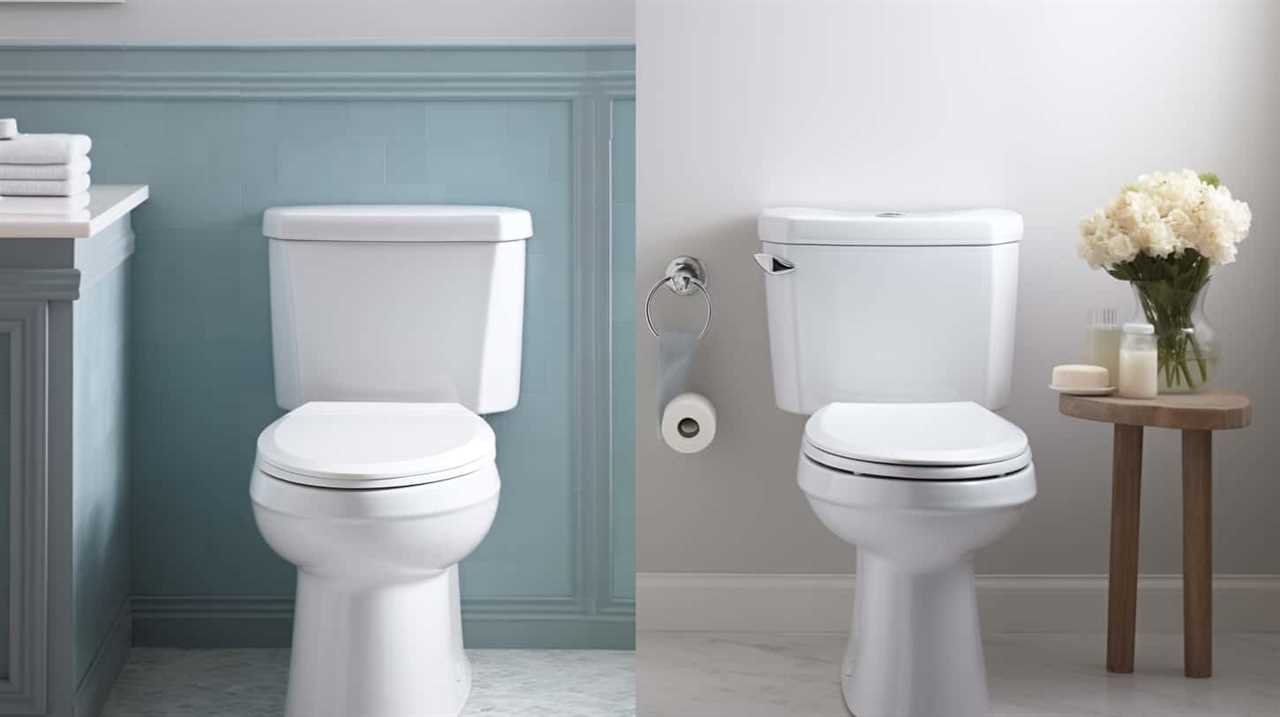
With the flapper valve properly working, we can now move on to the next step in toilet maintenance: water level adjustment.
Water Level Adjustment
Once we understand the mechanics of a toilet, we can proceed to discuss the process of water level adjustment. Adjusting the water level in a toilet is essential for proper functionality and water conservation. By modifying the water level, we can prevent overflowing and ensure efficient flushing while minimizing water usage.
To adjust the water level, we need to locate the fill valve, typically located on the left-hand side of the toilet tank. This valve controls the flow of water into the tank. By turning the adjustment screw or knob, we can increase or decrease the water level.
Here is a table illustrating the water level adjustment process and some water-saving techniques:

| Water Level Adjustment Process | Water-Saving Techniques |
|---|---|
| Turn the adjustment screw clockwise to increase water level | Install a dual flush system |
| Turn the adjustment screw counterclockwise to decrease water level | Use a displacement device like a toilet dam or a bottle filled with water |
| Test flush after each adjustment to ensure proper water level | Fix any leaks promptly |
How a Running Toilet Affects Water Usage
When a toilet is running, it leads to wasted water and increased costs.
The constant flow of water can result in hundreds of gallons being wasted each day, leading to a higher water bill.
Additionally, running toilets have a negative environmental impact, as they contribute to water scarcity and strain on water resources.
It’s crucial to promptly repair running toilets to conserve water, reduce costs, and minimize the environmental footprint.
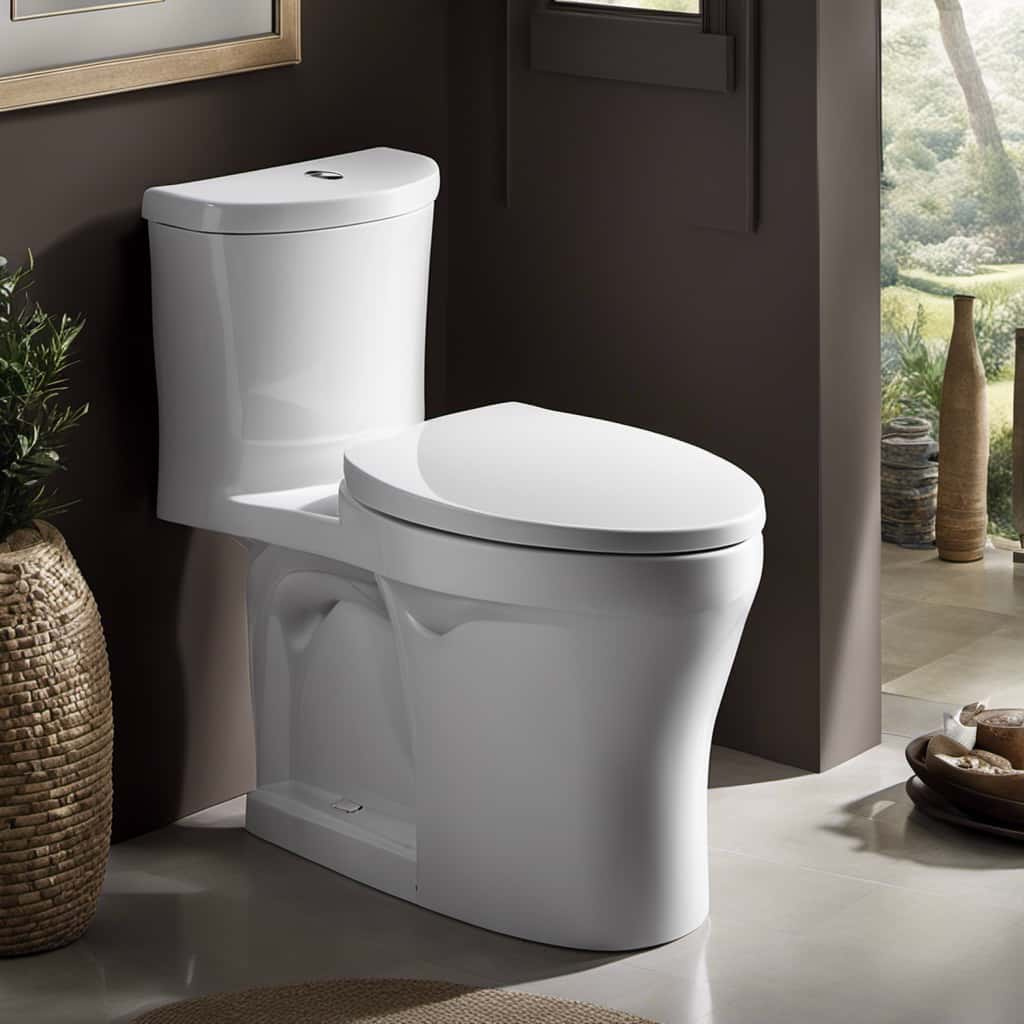
Wasted Water and Costs
We need to understand the significant amount of water wasted and the potential costs incurred when a toilet is running.
A running toilet can waste a substantial amount of water, leading to negative impacts on water conservation efforts and financial burdens for homeowners. On average, a running toilet can waste up to 200 gallons of water per day, which translates to approximately 6,000 gallons per month.
This excessive water usage not only puts a strain on our limited water resources but also increases water bills significantly. The financial impact of a running toilet can be substantial, with homeowners potentially facing hundreds of dollars in additional costs each year.
Therefore, it’s crucial for individuals to promptly address and resolve any issues with running toilets to conserve water and avoid unnecessary expenses.
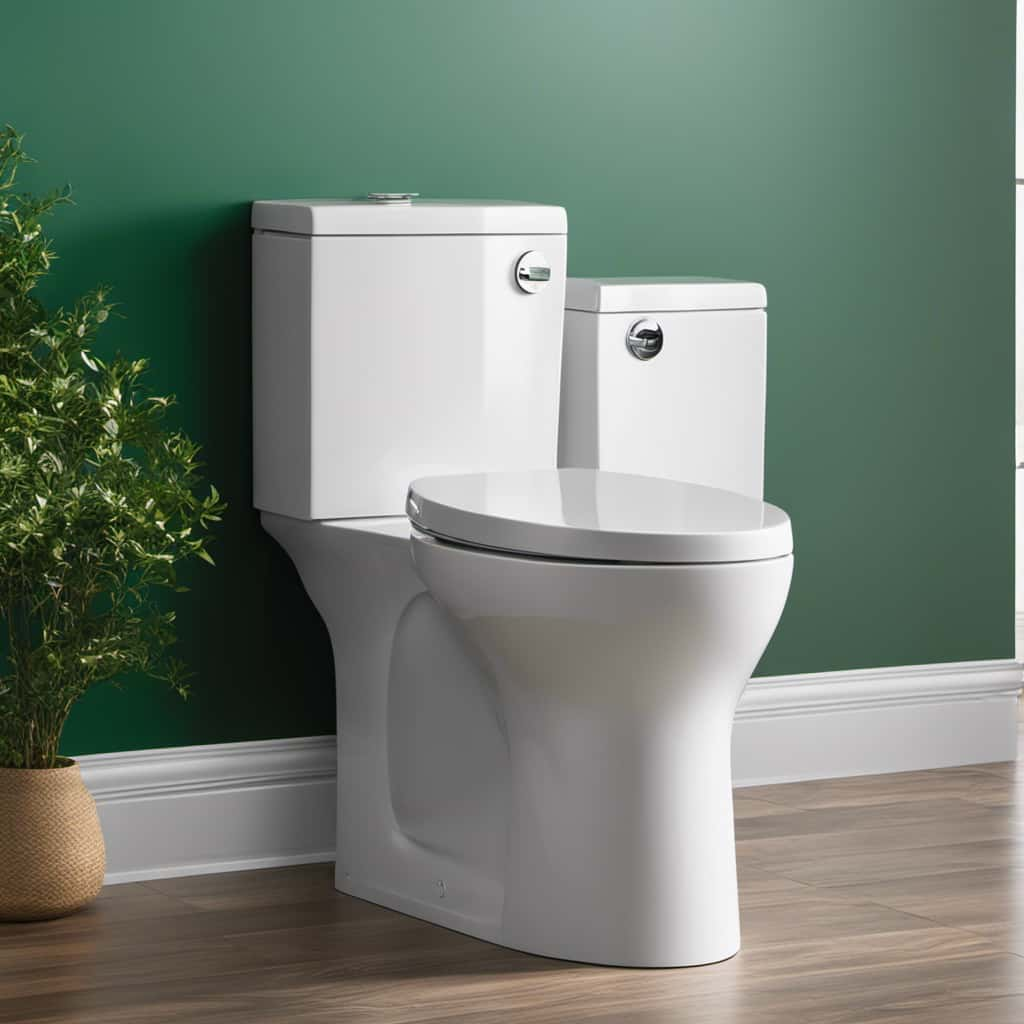
Environmental Impact of Running Toilets
A running toilet significantly impacts water usage and contributes to environmental concerns. Here are four reasons why the environmental impact of running toilets is a serious issue:
- Water Waste: Running toilets can waste hundreds of gallons of water per day, leading to unnecessary strain on water resources and higher water bills for consumers.
- Water Conservation: Conserving water is crucial for sustainable living. Running toilets negate efforts to conserve water and exacerbate issues related to water scarcity.
- Impact on Water Scarcity: Running toilets contribute to the depletion of water sources, which can lead to water scarcity in regions already facing water stress.
- Environmental Damage: Excessive water usage resulting from running toilets can harm ecosystems and aquatic life, disrupting the delicate balance of natural habitats.
Understanding the environmental impact of running toilets highlights the importance of prompt repair to minimize water waste and protect our precious water resources.
Importance of Prompt Repair
To prevent further water waste and mitigate environmental damage, it’s crucial to promptly address and repair a running toilet. A running toilet can have a significant impact on water usage, leading to wastage and higher water bills. When a toilet continuously runs, it can waste thousands of gallons of water per month, putting a strain on water resources and increasing water consumption. This not only affects the environment but also the household budget.
Water conservation and implementing water-saving techniques are essential in reducing our overall water usage. Repairing a running toilet is a simple yet effective way to achieve this. By fixing any leaks or issues causing the toilet to run continuously, we can conserve water and contribute to a more sustainable future.
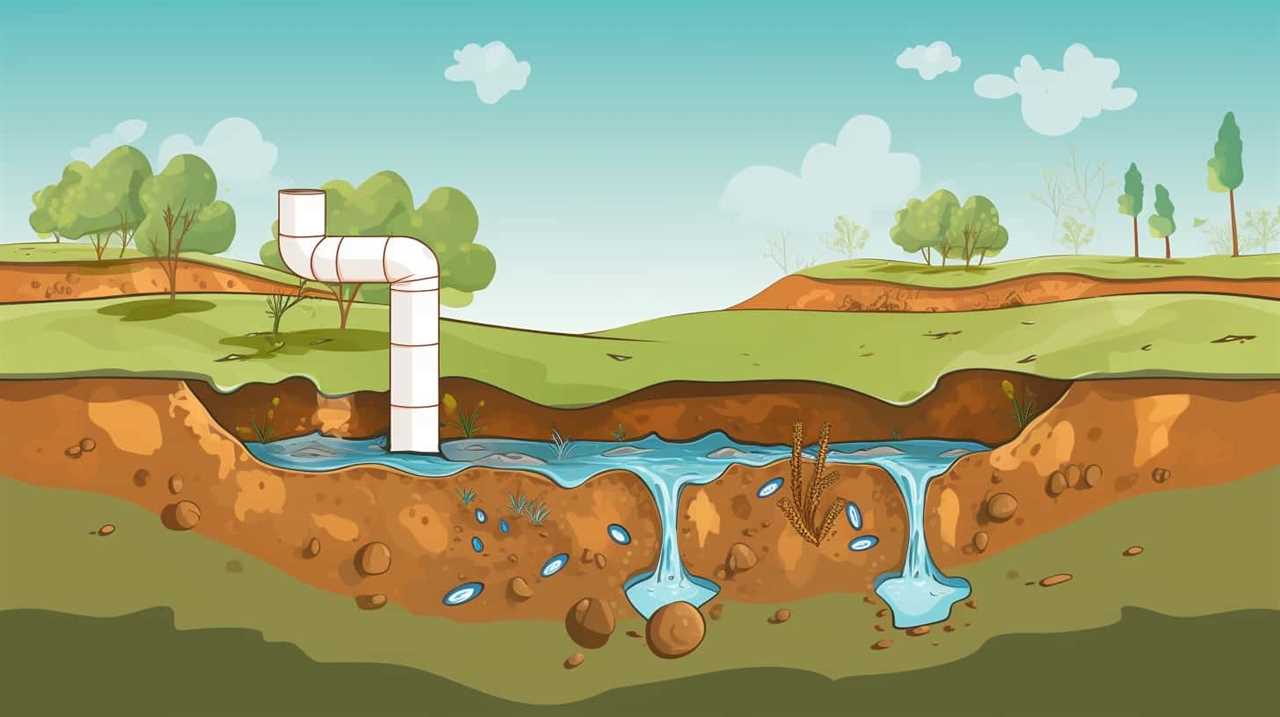
Prompt repair not only saves water but also helps in reducing utility bills and ensuring the efficient use of this valuable resource.
The Impact of a Running Toilet on Your Water Bill
Our water bill can be significantly affected by a running toilet. Here are four reasons why a running toilet can have a substantial financial impact:
- Water wastage: A running toilet can waste a significant amount of water, leading to higher water bills. On average, a running toilet can waste up to 200 gallons of water per day, resulting in unnecessary expenses.
- Continuous water flow: A running toilet involves a constant flow of water, increasing the usage and, consequently, the cost. This continuous flow can accumulate over time, significantly impacting your water bill.
- Inefficient water conservation: A running toilet goes against the principles of water conservation. It disregards the need to conserve water, leading to higher consumption and a negative impact on the environment.
- Undetected leaks: In some cases, a running toilet may not be immediately noticeable. The constant flow of water can go unnoticed for days or even weeks. This delay in identifying and repairing the issue can result in a substantial increase in your water bill.
Understanding the financial impact of a running toilet emphasizes the importance of promptly addressing the issue.
Signs That Your Toilet Is Running Continuously
Here are three signs that indicate your toilet is running continuously:
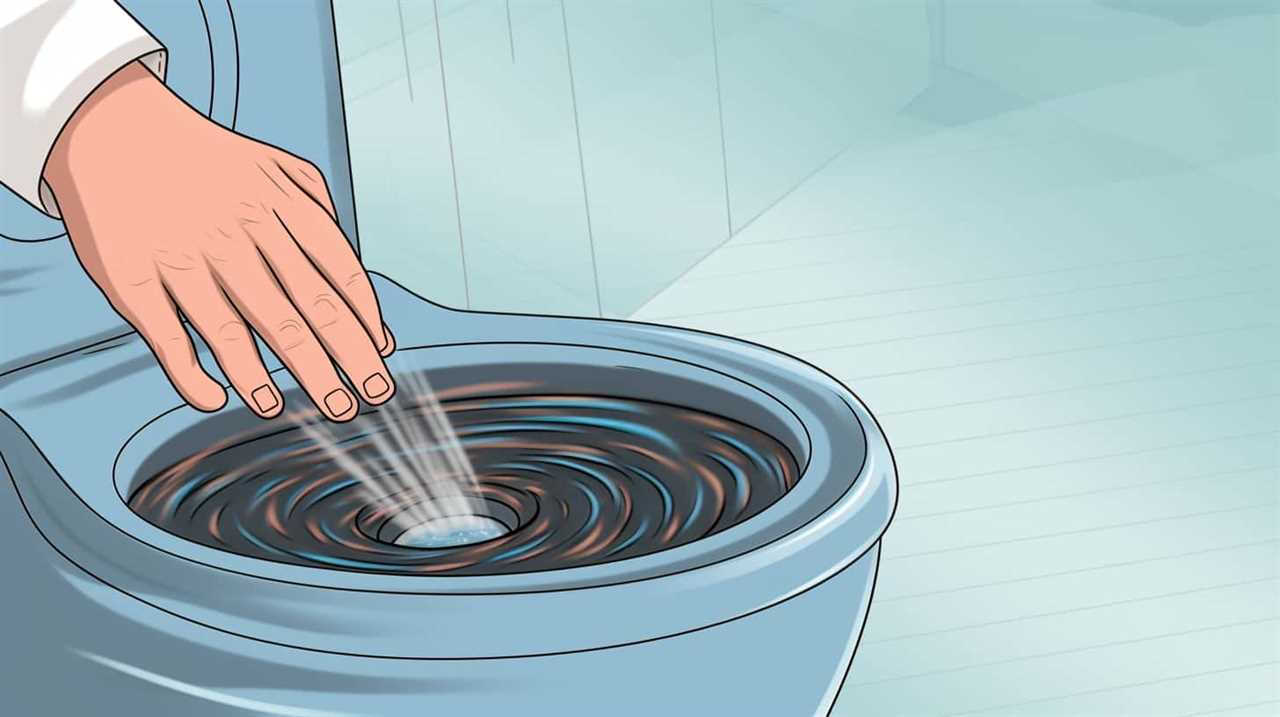
First, you may notice an increase in your water bill. If your toilet is continuously running, it can waste a significant amount of water, leading to higher costs.
Second, you may hear a constant refilling noise coming from the toilet tank. This noise occurs when the water is continuously flowing into the tank to maintain the water level.
Lastly, if you observe water constantly flowing into the toilet bowl, even when it’s not in use, this is a clear indication that your toilet is running continuously.
Water Bill Increases
Water bill increases can be a sign that our toilet is running continuously. When a toilet is running, it can waste a significant amount of water, leading to higher water bills. Here are four reasons why a running toilet can impact your household budget:
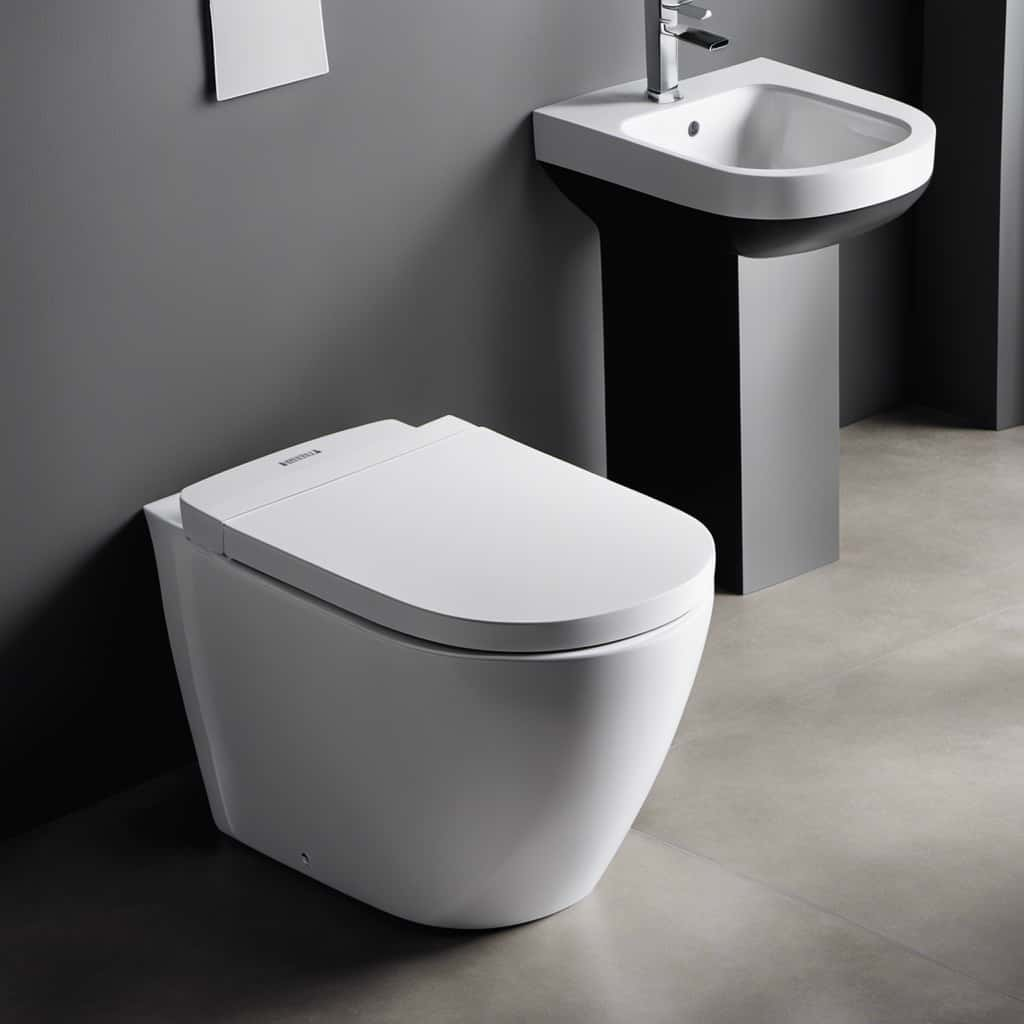
- Increased water consumption: A running toilet can waste several gallons of water per day, causing your water consumption to skyrocket.
- Continuous water flow: The constant flow of water into the toilet bowl can lead to continuous water usage, increasing your water bill.
- Inefficient flushing: A running toilet may not flush properly, requiring multiple flushes and using more water than necessary.
- Hidden leaks: A running toilet may indicate hidden leaks in the plumbing system, causing water to be wasted without your knowledge.
By addressing a running toilet promptly and implementing water conservation tips, you can reduce your water bill and save money.
Now, let’s move on to the next topic: the constant refilling noise.
Constant Refilling Noise
As we continue our discussion on the impact of a running toilet, one clear sign that your toilet is running continuously is the constant refilling noise it produces. This noise is often caused by a faulty flapper valve or a malfunctioning fill valve, which leads to water waste and an increase in your water bill.
To help you identify if your toilet is running continuously, here are some signs to look out for:
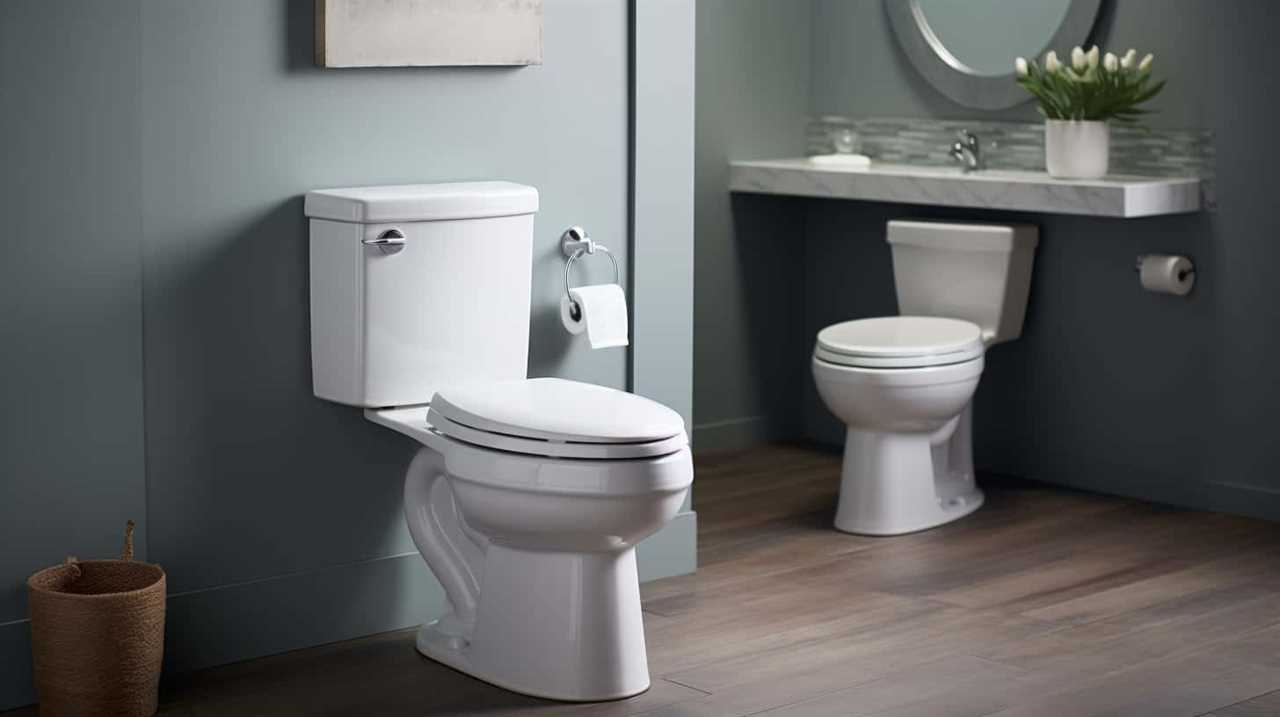
| Signs of a Continuously Running Toilet |
|---|
| Constant refilling noise |
| Water level constantly fluctuating |
| Visible water leaks |
| Excessive water consumption |
If you notice any of these signs, it’s crucial to address the issue promptly to prevent further water waste and avoid unnecessary expenses on your water bill. A continuously running toilet can waste hundreds of gallons of water per month, significantly impacting your utility costs. So, it’s essential to take action and have your toilet repaired or replaced by a professional plumber to prevent further water waste and minimize the impact on your water bill.
Continuous Water Flow
One of the first signs that our toilet is running continuously is the constant sound of water flowing. This continuous water flow isn’t only annoying, but it also has a significant impact on water conservation.
Here are four key points to consider when analyzing the water flow in your toilet:
- Water meter analysis: Monitor your water meter to determine if there’s a continuous flow of water when no faucets or appliances are in use.
- Toilet bowl leakage: Check for any visible leaks in the toilet bowl or around the base of the toilet.
- Flapper valve examination: Inspect the flapper valve to ensure it’s sealing properly and not allowing water to constantly flow into the bowl.
- Overflow tube inspection: Verify that the water level in the tank isn’t too high, causing continuous overflow into the overflow tube.
Understanding these signs and conducting a thorough water flow analysis will help identify any issues and promote water conservation in your home.
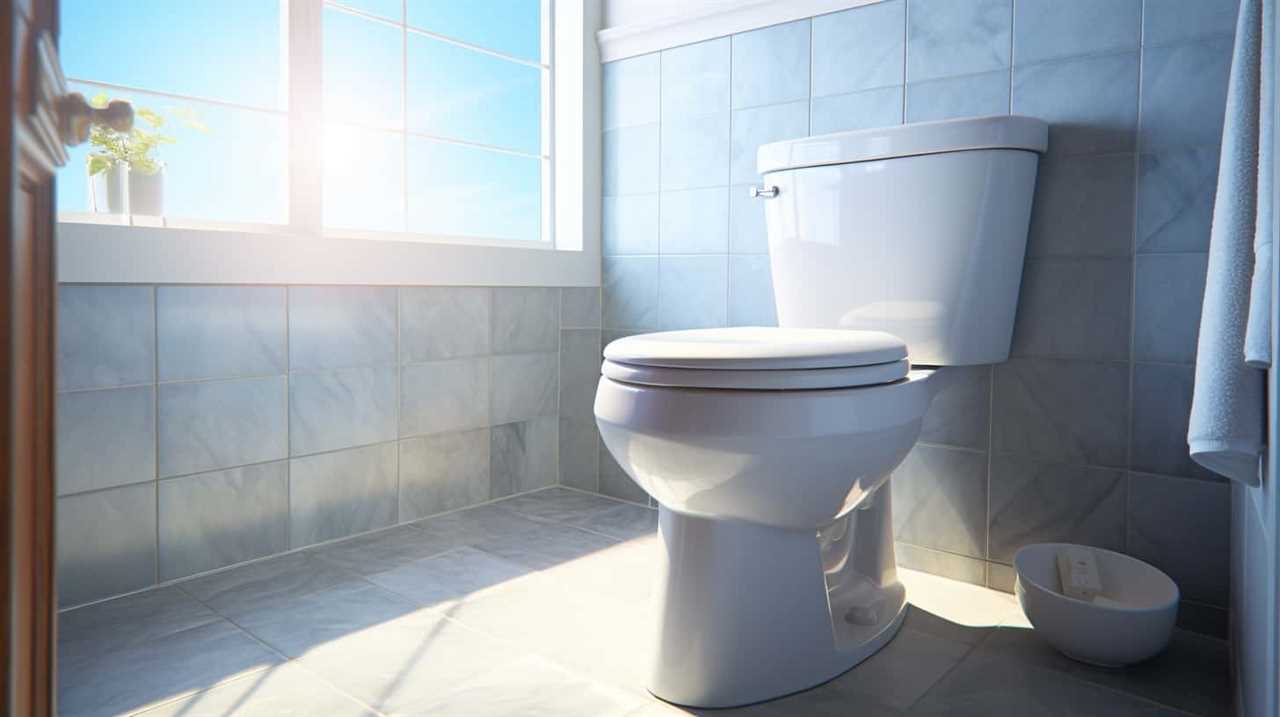
Potential Damage Caused by a Running Toilet
From personal experience, we’ve witnessed the potential damage caused by a continuously running toilet. Apart from the annoyance and wasted water, there are other consequences that can have a significant impact on both your wallet and the environment.
First, the potential costs associated with a running toilet can quickly add up. The continuous flow of water can lead to high water bills, especially if the issue goes unnoticed for an extended period. Additionally, the constant water flow can cause damage to the toilet’s internal components, such as the fill valve and flapper, resulting in costly repairs or replacements.
Furthermore, the environmental impact of a running toilet is substantial. The unnecessary water wastage contributes to water scarcity and puts a strain on natural resources.
In the subsequent section, we’ll explore whether a running toilet can fix itself over time, providing a potential solution to these problems.
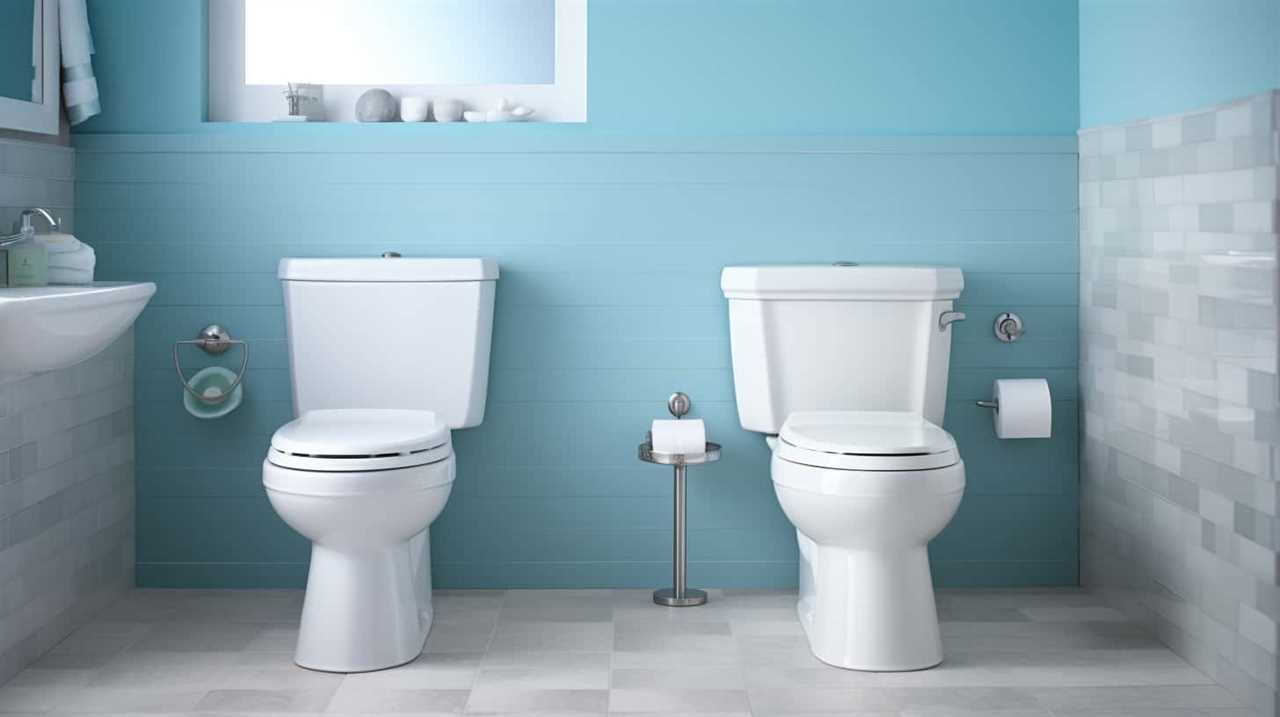
Can a Running Toilet Fix Itself Over Time
Now let’s delve into whether a running toilet can rectify the issue on its own over time. Unfortunately, a running toilet can’t fix itself without intervention. Here are four reasons why:
- Wasted water: A running toilet can waste hundreds of gallons of water per day, leading to higher water bills and unnecessary strain on the environment.
- Potential damage: A constant flow of water can damage the toilet’s components, such as the flapper valve or fill valve. Ignoring the problem may result in costly repairs or even a complete toilet replacement.
- Mold and mildew growth: A continuously damp environment caused by a running toilet can promote the growth of harmful mold and mildew, posing health risks to you and your family.
- Preventive measures: To prevent a running toilet from happening again, regular maintenance is crucial. Ensure that the flapper valve and fill valve are in good condition, and address any leaks promptly. Additionally, avoid flushing excessive amounts of toilet paper or foreign objects that could cause clogs.
How Long Will a Running Toilet Continue to Run
We can’t predict exactly how long a running toilet will continue to run, but it’s important to address the issue promptly to prevent further damage and wastage of water.
A running toilet is usually caused by a faulty flapper valve or a malfunctioning fill valve. If left unattended, it can result in a significant water loss and potentially lead to higher water bills.
To determine how to fix a running toilet, it’s necessary to troubleshoot the problem. This involves inspecting the flapper valve, checking the water level, and examining the fill valve.
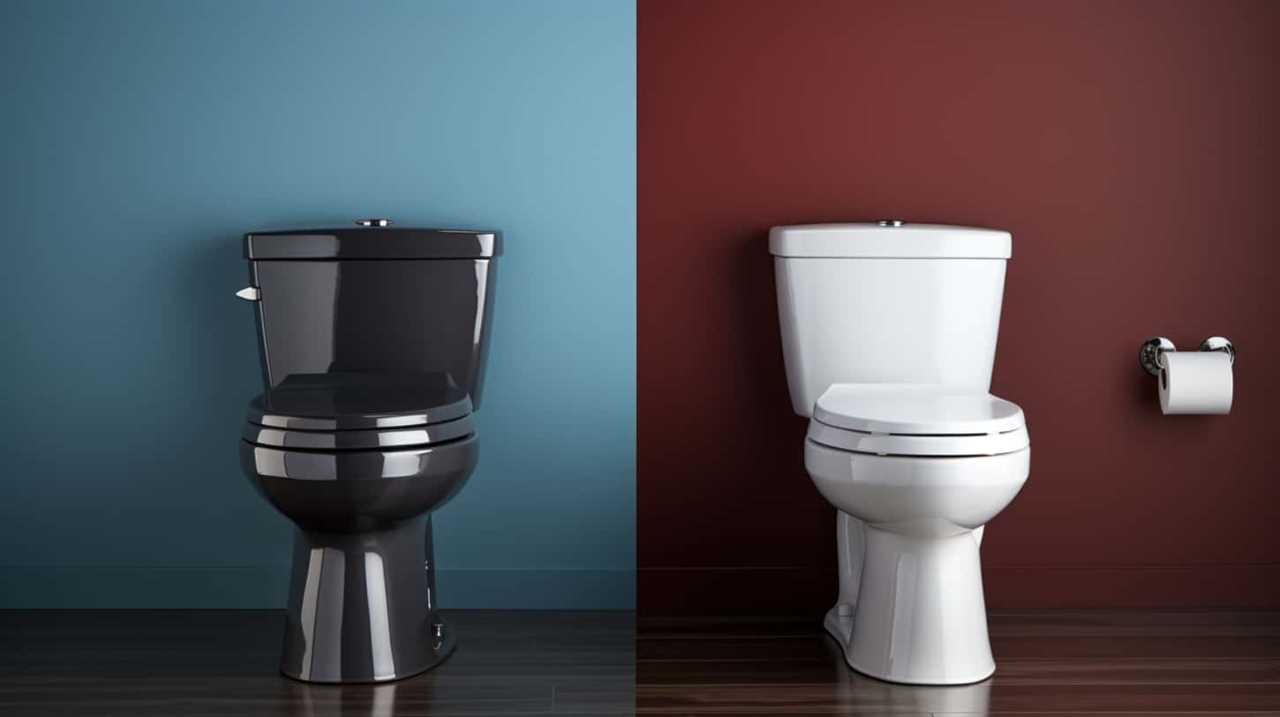
Steps to Troubleshoot a Running Toilet
To troubleshoot a running toilet, our first step is inspecting the flapper valve, checking the water level, and examining the fill valve. Here are the steps to diagnose and fix the issue:
- Inspect the flapper valve: Check if it’s properly sealing the tank. A worn or misaligned flapper can cause water to continuously flow into the bowl.
- Check the water level: Ensure that the water level in the tank isn’t too high or too low. Adjust it if necessary to prevent overflow or inadequate flushing.
- Examine the fill valve: Look for any leaks or malfunctions in the fill valve. A faulty fill valve can cause water to constantly run into the tank.
- Adjust water pressure: High water pressure can lead to a running toilet. If the water pressure is too high, consider installing a pressure regulator to control the flow.
Tools You May Need to Fix a Running Toilet
Now that we’ve discussed troubleshooting steps for a running toilet, let’s move on to the tools you may need to fix it.
Having the necessary repair tools is essential for a successful DIY repair job. In this section, we’ll explore common toilet problems and share some DIY troubleshooting tips to help you identify the tools you may need.
Necessary Repair Tools
When addressing a running toilet, it’s essential to gather the necessary repair tools. Here are some tools you may need to fix a running toilet:
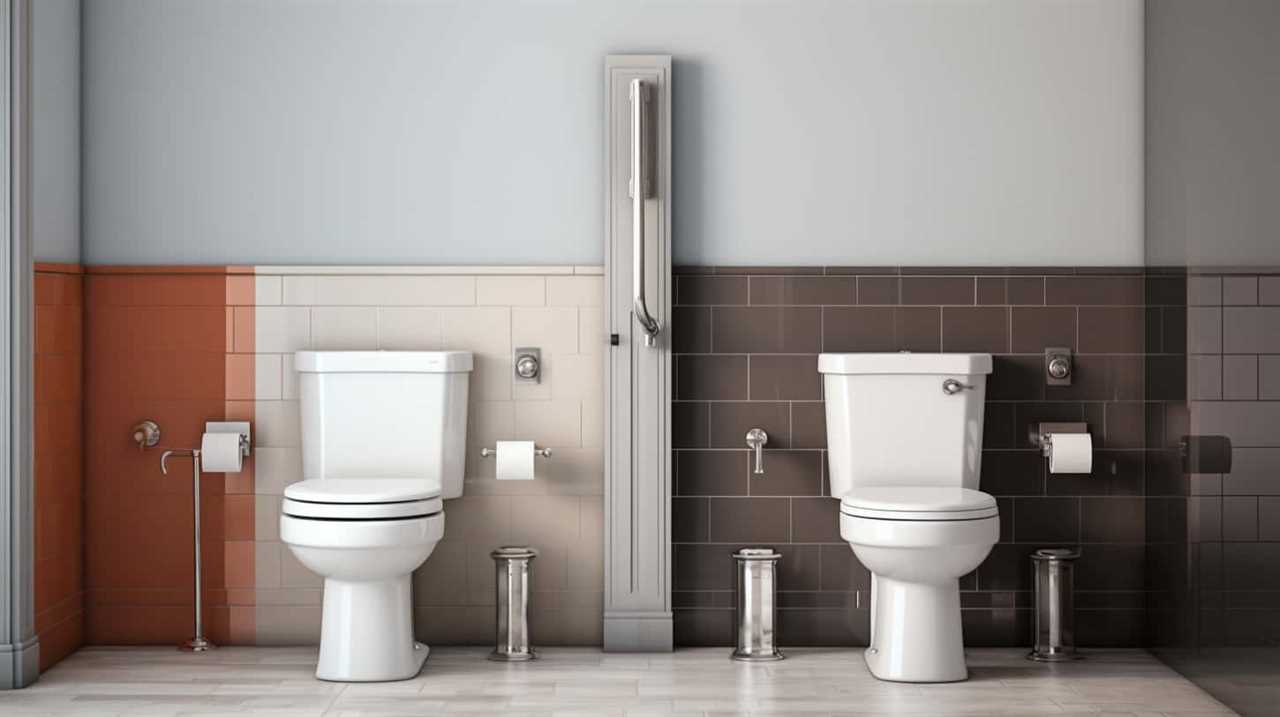
- Adjustable wrench: This tool is used to loosen and tighten nuts and bolts, making it useful for removing and securing toilet tank bolts.
- Screwdriver: A screwdriver is necessary for removing screws that hold the toilet tank lid in place or for disassembling the toilet handle.
- Plunger: A plunger is a common tool used for unclogging toilets. It creates suction to remove blockages in the toilet drain.
- Toilet repair kit: This kit typically includes replacement parts such as flappers, fill valves, and flush valves. It’s useful for fixing common toilet problems like leaks and inconsistent flushing.
By having these necessary repair tools on hand, you can troubleshoot and fix common toilet problems efficiently.
Now, let’s move on to discussing common toilet problems and their solutions.
Common Toilet Problems
We will discuss four common toilet problems that may require specific tools to fix them. When it comes to water conservation and toilet maintenance, it’s crucial to address these issues promptly.
The first problem is a leaking flapper, which can be solved by replacing the flapper with a new one. This will ensure that water isn’t continuously flowing into the bowl.

The second problem is a faulty fill valve, which can be fixed by replacing the entire fill valve assembly. This will regulate the water level in the tank and prevent constant running.
The third problem is a worn-out flush valve seal, which can be resolved by replacing the seal. This will prevent water leakage between the tank and the bowl.
Lastly, a clogged toilet can be cleared using a plunger or a toilet auger. These tools are essential for maintaining a properly functioning toilet and reducing water waste.
DIY Troubleshooting Tips?
To continue troubleshooting common toilet problems, let’s explore the DIY tips and tools needed to fix a running toilet.
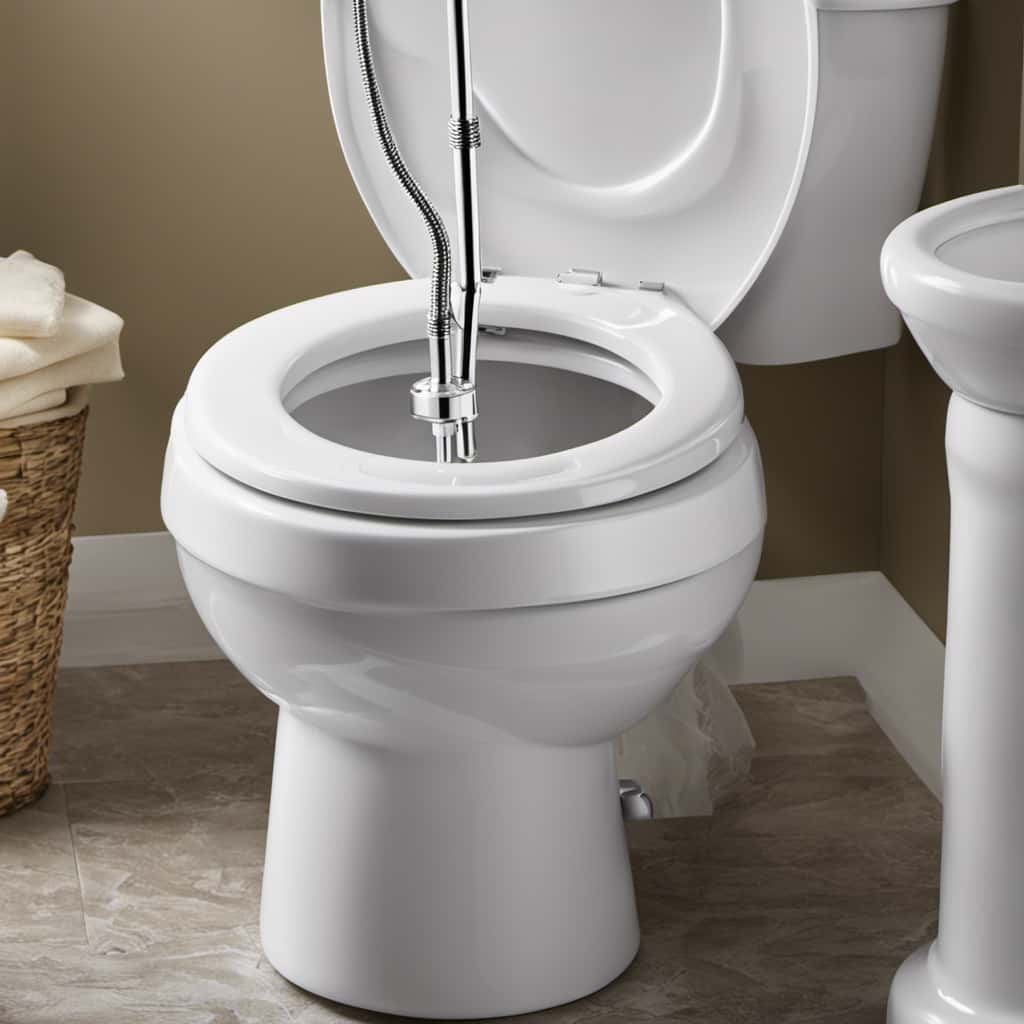
Here are four essential DIY repair techniques and troubleshooting strategies for fixing a running toilet:
- Inspect the flapper valve: The flapper valve is often the culprit behind a running toilet. Check if it’s properly sealing the tank. If it’s worn or damaged, replace it with a new one.
- Adjust the float: The float regulates the water level in the tank. If it’s set too high, it can cause the toilet to constantly run. Adjust it to the correct height to ensure proper functioning.
- Check the fill valve: The fill valve controls the water flow into the tank. If it’s faulty or clogged, it can lead to a running toilet. Clean or replace the fill valve if necessary.
- Look for leaks: Inspect the toilet components and connections for any leaks. Tighten loose bolts or replace faulty gaskets to prevent water wastage and a running toilet.
DIY Solutions for a Running Toilet
One common DIY solution for a running toilet is to adjust the water level in the tank. To do this, locate the water level adjustment screw or valve on the fill valve assembly. Turn the screw or valve clockwise to lower the water level, or counterclockwise to raise it. Make small adjustments and test the toilet after each adjustment until the desired water level is achieved.
Another DIY solution is to check and replace the flapper valve if it’s worn or damaged. Simply remove the old flapper valve and install a new one according to the manufacturer’s instructions.
Additionally, you can check and tighten any loose connections, such as the tank bolts and the fill valve nut. This may help resolve the issue if the running toilet is caused by a leak.

However, if these DIY solutions don’t fix the problem, it might be time to call a professional plumber for further assistance.
When to Call a Professional Plumber for a Running Toilet
If the DIY solutions for a running toilet don’t fix the problem, it may be necessary to consult a professional plumber. Here are four situations when it’s best to call a plumber for a running toilet:
- Persistent leaks: If you’ve tried replacing the flapper valve or adjusting the water level, but the toilet continues to leak, it’s time to bring in a professional. They can identify the source of the leak and fix it properly.
- Frequent clogs: If your toilet clogs regularly, despite your best efforts to unclog it, a plumber can determine the underlying cause. They can use specialized tools to clear the blockage and ensure proper drainage.
- Strange noises: If your toilet makes unusual noises, such as gurgling or whistling, it could be a sign of a more significant issue. A plumber can inspect the plumbing system and identify any problems that need to be addressed.
- Water damage: If you notice water damage around the toilet or on the floor, it’s important to call a plumber immediately. These signs may indicate a serious issue with the toilet or the surrounding plumbing that needs professional attention.
Preventative Measures to Avoid a Running Toilet
To prevent a running toilet, we can take proactive measures by regularly checking the toilet’s components and ensuring proper maintenance.
One of the most important aspects of preventing a running toilet is to conserve water. Implementing water saving tips can help reduce the risk of a toilet running continuously. For example, installing a dual-flush system can allow users to choose between a full or partial flush, depending on the waste volume.
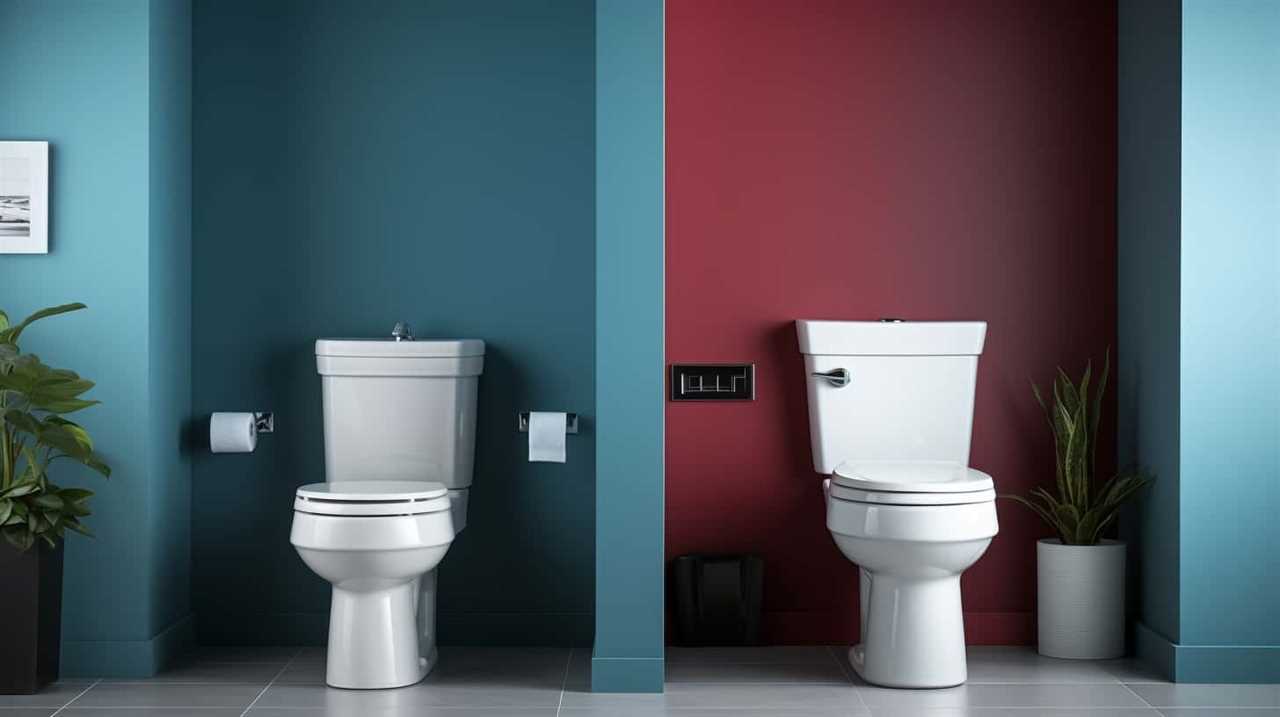
Additionally, replacing the toilet flapper regularly can prevent leaks and ensure proper water flow. It’s also important to check the fill valve and adjust it if necessary to maintain the correct water level in the tank.
Final Thoughts on Resolving a Running Toilet Issue
In our quest to resolve a running toilet issue, we must now delve into our final thoughts on the matter. After troubleshooting various preventative measures and attempting to fix the problem, it’s important to consider a few key points before giving up. Here are some final thoughts and troubleshooting tips to help you resolve a running toilet issue:
- Double-check the flapper valve: Ensure that the flapper valve is properly aligned and sealing the flush valve opening. Adjust or replace it if necessary.
- Inspect the fill valve: Check for any leaks or malfunctions in the fill valve. Replace it if needed.
- Examine the water level: Ensure that the water level in the tank is at the correct height. Adjust the float or fill valve accordingly.
- Seek professional help: If all else fails, it may be time to call a plumber who can diagnose and resolve the issue with expertise.
Conclusion
In conclusion, a running toilet isn’t a problem that will simply go away on its own. Like a leaky faucet, it will continue to waste water and increase your water bill until it’s fixed.
Understanding the causes and mechanics of a running toilet is essential in finding the right solution. Whether it’s a simple DIY fix or the need for a professional plumber, taking preventative measures will help you avoid future running toilet issues and ensure a more efficient and cost-effective bathroom experience.

